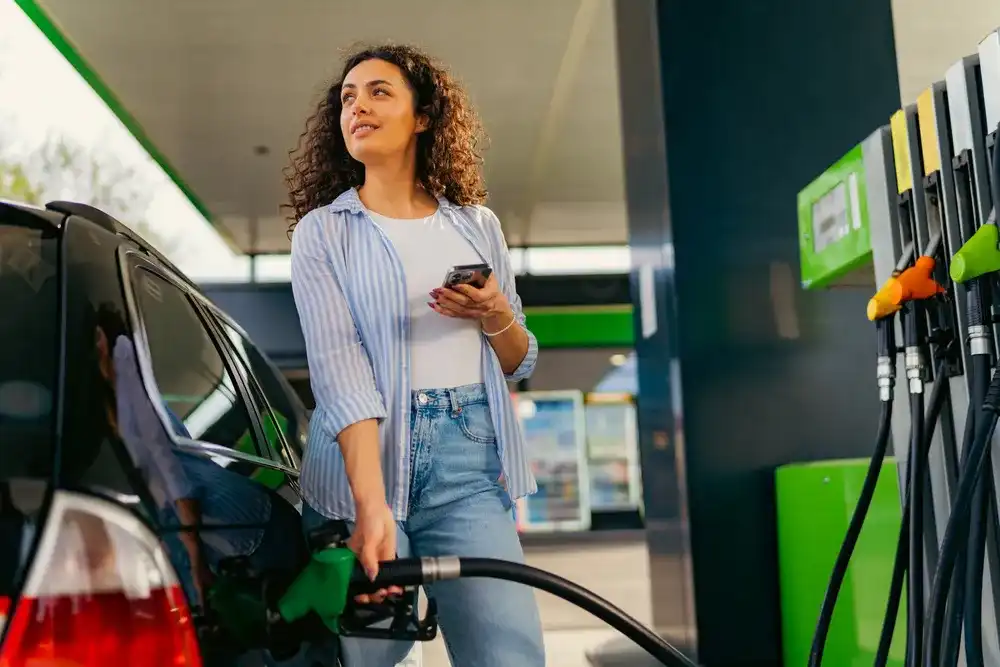Maximizing Your Savings: Unveiling the Secrets of the Gas Rebate Check
With the current cost of gas hovering around $3.21 per gallon, motorists may find a momentary relief in their fuel expenses. However, this respite could be short-lived as gas prices tend to fluctuate and, as an overarching trend, are steadily climbing. In the face of such expenses, understanding the intricacies of gas rebate checks may be beneficial. In this article, we will let you in on the secrets of gas rebate checks, offering insights and strategies to help you maximize your savings at the pump.

Gas Rebate Checks Unveiled
Amidst the current economic landscape marked by inflationary pressures, the federal government has implemented various measures to alleviate financial burdens, including tapping into emergency oil reserves and proposing a federal gas tax holiday. One prominent initiative gaining traction is the Gas Prices Relief Act of 2022, which aims to provide relief to consumers grappling with soaring gas prices. While discussions regarding the distribution of gas stimulus checks for 2024 are underway, several states are already taking proactive steps to assist residents at the pump.
For instance, North Carolina state senators have proposed a one-time payment of $200 to licensed adult drivers to alleviate escalating gas costs. Additionally, California has introduced the California Inflation Relief 2024 Checks, offering financial aid to middle-class residents under the Gas Rebate Act of 2022. Despite awaiting federal approval, several states have initiated their own gas stimulus programs, exemplifying a grassroots approach to addressing fuel expenses.
Further, states like Idaho, Georgia, Indiana, and New Mexico have implemented various forms of tax refunds and credits to ease the burden on taxpayers. These initiatives underscore the significance of gas rebate checks in managing fuel expenses, particularly amid fluctuating gas prices and economic uncertainty.
Understanding and leveraging gas rebate programs can significantly impact household budgets, enabling individuals to allocate resources efficiently and live within their means. By incorporating gas rebate checks to help pay down expenses as outlined in a comprehensive family budget, individuals can optimize savings and navigate the challenges posed by rising fuel costs effectively.
Eligibility and Enrollment
Similar to the distribution of pandemic stimulus checks, eligibility for gas rebate checks hinges on income levels. Individuals earning below $75,000 annually qualify for the full rebate amount of $100. However, as income surpasses $75,000, the rebate diminishes gradually, with individuals earning over $80,000 ineligible for any rebate. For joint filers, the threshold is set at $150,000, with those earning less receiving the full $100. The rebate is phased out at $160,000.
Enrolling in gas rebate programs typically involves visiting your respective state's Department of Revenue website and adhering to outlined guidelines. However, the enrollment process may be streamlined for individuals who filed taxes electronically and received refunds via direct deposit, as the government already possesses the necessary information to distribute rebates efficiently.
It's essential to stay informed about specific requirements and qualifications for eligibility, as criteria may vary depending on state regulations and program guidelines. Some states may impose additional qualifications such as residency status, vehicle ownership, or tax filing status. Familiarizing oneself with these requirements ensures a smooth enrollment process and timely receipt of gas rebate checks.
Moreover, individuals should regularly check for updates and announcements from state authorities regarding enrollment periods and any changes to eligibility criteria. Eligible individuals can maximize their chances of benefiting from gas rebate programs and effectively manage their fuel expenses by staying proactive and informed.
Maximizing Savings with Gas Rebate Checks
While discussions surrounding gas rebate checks are still underway and await confirmation, staying informed is a must to capitalize on potential benefits. To remain up to date, follow the news or periodically check your state's Department of Revenue website for announcements and updates regarding eligibility criteria and enrollment procedures.
Once eligibility is established, there are several strategies to maximize the benefits of gas rebate checks. Firstly, consider leveraging specific credit cards or loyalty programs offering additional rebates or fuel purchase rewards. Many credit card companies offer cashback incentives or bonus points for gas spending, amplifying the savings garnered from rebate checks.
Furthermore, explore any special promotions or partnerships between gas stations and retailers in your area that can enhance gas rebate opportunities. Some gas stations may collaborate with grocery stores or online platforms, offering bonus rebates or discounts on fuel purchases as part of promotional campaigns. By taking advantage of these partnerships, consumers can stretch their rebate dollars further and optimize savings at the pump.
Additionally, adopting fuel-efficient driving habits and regularly maintaining your vehicle can contribute to long-term savings on gas expenses, further complementing the benefits of gas rebate checks. Simple practices such as maintaining proper tire pressure, minimizing idling time, and consolidating errands help reduce fuel consumption and maximize the value of rebate checks over time.
While the specifics of gas rebate checks are still being ironed out, proactive steps can be taken to prepare for potential opportunities to save on fuel expenses. By staying informed, leveraging rewards programs, exploring promotional offers, and practicing fuel-efficient habits, individuals can make the most of gas rebate checks and achieve significant savings at the pump.

Exploring Pump Rewards
Across the country, numerous gas stations offer enticing pump reward programs, providing an avenue for substantial savings on fuel expenses. From industry giants like Exxon Mobile Rewards+ and Shell Fuel Rewards to membership-based retailers such as Costco and Sam's Club, and convenience store chains like Speedy Rewards and Circle K, there's a diverse array of programs to choose from. These programs often reward customers with points, discounts, or cashback on fuel purchases, making each trip to the pump more economical.
Participating in these pump reward programs can be highly lucrative, especially for frequent drivers or those with sizable fuel expenditures. By signing up for these programs and consistently using designated gas stations, individuals can accumulate rewards over time and offset their fuel costs effectively. Additionally, some programs offer additional perks such as discounts on groceries, merchandise, or car services, further enhancing the overall value proposition for consumers.

Maximize Your Potential Gas Rebate Check With Other Gas-Savings Programs
Maximizing your gas rebate check is feasible and essential in navigating the ever-rising fuel costs. By understanding gas rebate eligibility criteria, exploring pump rewards programs, and leveraging various gas-saving initiatives, individuals can significantly reduce their fuel expenses and enhance their financial well-being.
The combination of gas rebate checks and pump rewards offers a powerful strategy for optimizing savings at the pump, especially during times of economic uncertainty.
We encourage readers to take proactive steps in exploring and enrolling in gas rebate programs available in their respective states and signing up for pump rewards at participating gas stations. These initiatives provide immediate relief and contribute to long-term financial resilience.
For more tips and insights on maximizing gas rebates and building financial literacy, be sure to follow the Cash Store blog. Together, let's empower ourselves with the knowledge and tools to achieve financial efficiency and security.
The content on this page provides general consumer information or tips. It is not financial advice or guidance. Each person’s circumstances are unique. The Cash Store may update this information periodically. This information may also include links or references to third-party resources or content. We do not endorse the third-party or guarantee the accuracy of this third-party information. There may be other resources that also serve your needs.
More Articles
What to Know About Crypto-Backed Loans
Curious about using your crypto as collateral? Discover how crypto-backed loans work, their benefits, risks, and what to consider before borrowing.
Read More >How Does Installment Loan Approval Work?
Curious about how installment loan approval works? Learn about the key factors lenders consider, the application process, and tips to improve your chances of approval.
Read More >Is it Better to Get an Installment Loan or Line of Credit?
Installment loan or line of credit—which is right for you? Learn the key differences, pros and cons, and how to choose the best option for your financial needs.
Read More >Loan Amount is subject to loan approval. Loan terms and availability may vary by location. Approval rate based on complete applications received across all Cash Store locations. Customers can typically expect to receive loan proceeds in less than 20 minutes; however, processing times may vary. Loans / Advances are provided based on approved credit. Each applicant for credit is evaluated for creditworthiness.
Please see the Licenses and Rates page for additional product details.
Cash Store offers consumer credit products that are generally short-term in nature and not intended for long-term borrowing needs.
In Texas, Cash Store is a Credit Services Organization. Loans are provided by a non-affiliated third-party lender. Please see the Licenses and Rates page for links to Consumer Disclosures and choose the one for the product and amount that most closely relates to your loan request.
Customer Portal residency restrictions apply. Availability of funds may vary by financial institution.

